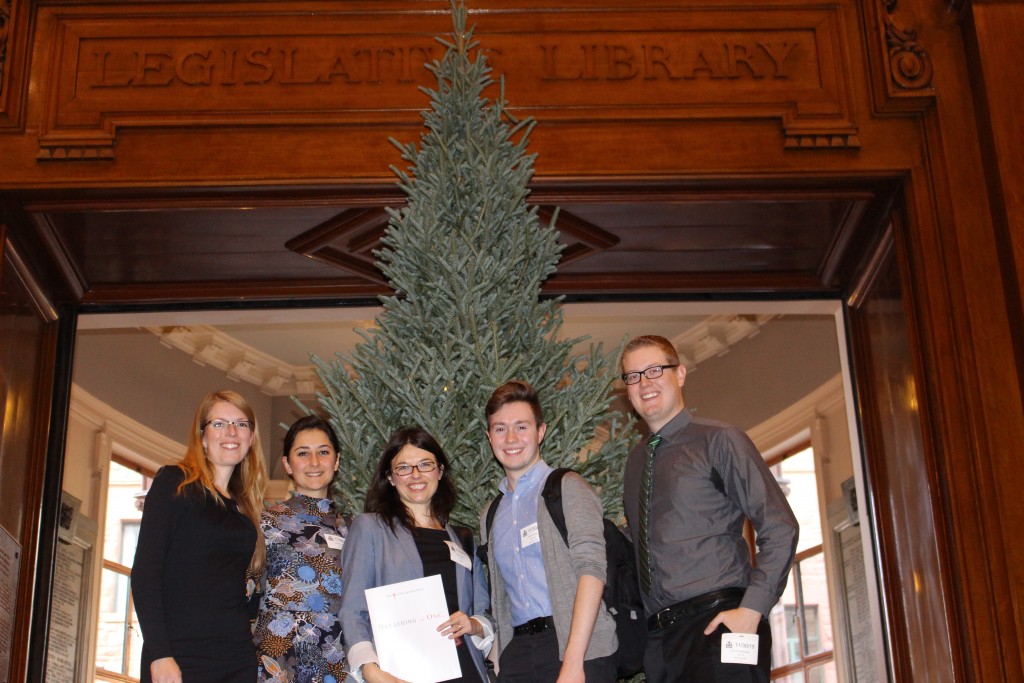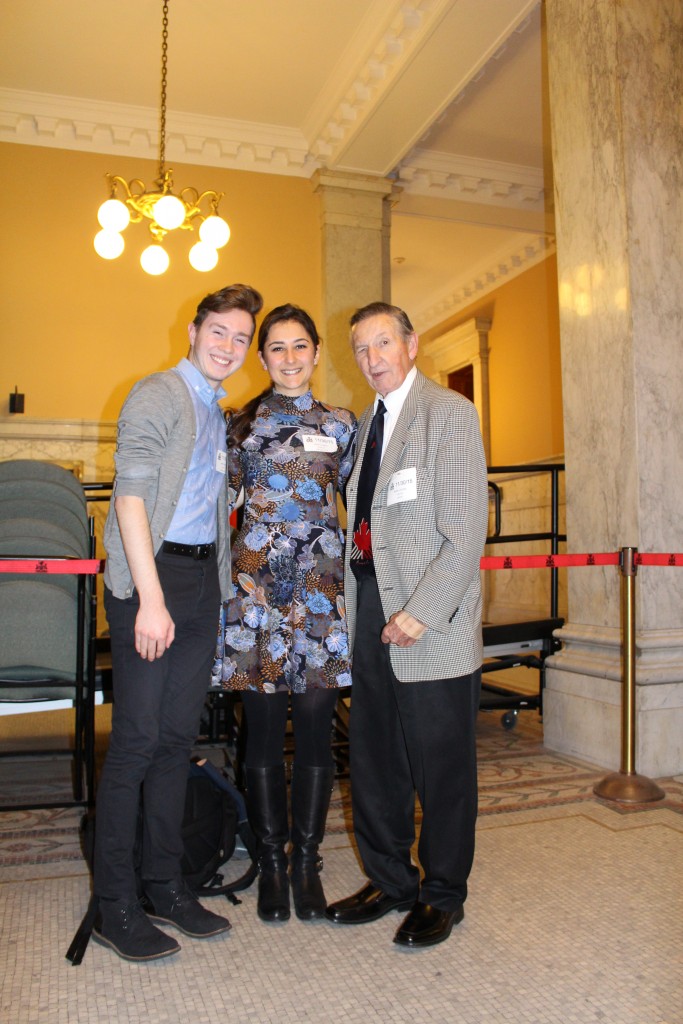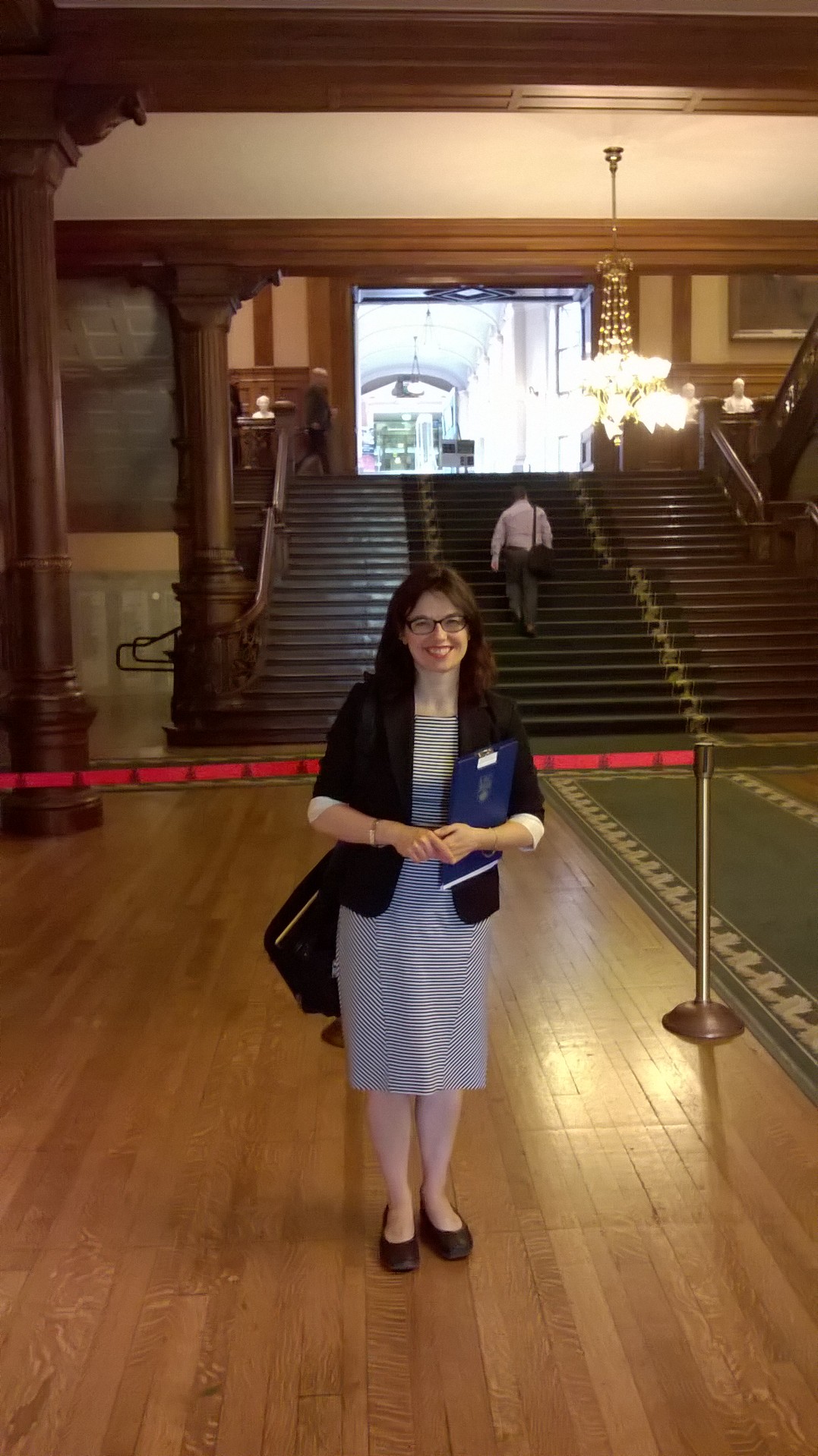Click here to hear Dawn’s interview with Radio Canada on our recent paper on the role of the microbiome in age-associated inflammtion…
Tag Archives: aging
Editorial: Breaking Down Walls: Microbiota and the Aging Gut
We’re thrilled that our publication was featured as an editorial in Cell Host & Microbe. Read Drs Erin S. Keebaugh and William W. Ja’s excellent editorial here…..
Publication: Age-Associated Microbial Dysbiosis Promotes Intestinal Permeability, Systemic Inflammation, and Macrophage Dysfunction
Mac in Five: “Lessons from the oldest of the old”.
See article with full links here.
Mac in Five
Lessons from the oldest of the old.
5 Weeks • 5 Professors • 5 Lessons • 5 Minutes a day
Course: Healthy Aging • Lesson #1 of 5
Would you rather live a long life in poor health or a short life in good health? For most of us this seems to be the trade-off but for the select few who become “supercentenarians” (those living to > 110), they seem to have the best of both worlds. Intriguingly, these oldest of the old are usually of sound mind and physically active until their death, and avoid many of conditions or diseases that almost seem to be an inevitable part of old age such as cardiovascular disease, metabolic disorders or dementia. Most of us aspire to an old age like the supercentenarians, which is active and healthy but when ill-health makes its inevitable appearance, the decline is rapid but brief. So how do they do it? Genetics seems to play a role, but there is no magic gene that makes us live longer, nor is there a particular diet, exercise or pill that ensures that you’ll live into the next century. Interestingly, we’ve recently learned that having a healthy immune system may be necessary for long and healthy life.
One of the most provocative studies of the role of the immune system in longevity comes from the study of Hendrikje van Andel-Schipper who was, briefly, the oldest woman in the world. She died of cancer at 115 and donated her body to science. She was remarkable in many regards but from an immunological perspective, she was exceptional because at the time of her death her circulating white blood cells came from only two hematopoietic stem cell clones, as opposed to the thousands or tens of thousands one would expect in a younger adult. Since a diverse repertoire of white blood cells is required to repair damaged tissues and seek out potentially cancerous cells, this loss of stem cells may, ultimately, have caused her death. The oldest old have another interesting immunological feature – low levels of inflammation, which seem to help them resist chronic inflammatory diseases like cardiovascular disease and dementia for longer.
So what can those of us who have not won the genetic lottery do to live long, healthy lives? Although there are some pre-clinical trials in mice and epidemiological data in humans that suggest it will be one day be possible to extend the years of healthy living by taking a pill, we are not there yet. Instead, we can lower our inflammation and extend the years we live in good health by exercising, eating well, maintaining a healthy body weight, and having a robust social network. We may not have what it takes to be a supercentenarian, but we can make the years that we have be the very best that they can be.
Suggested article for further learning: New Scientist
The Bowdish lab thanks a 5 year old philanthropist for donating $5 of her allowance to our research!
Running a research lab is expensive (very expensive!) and the vast majority of funding to the Bowdish lab comes from taxpayers by way of agencies like the Canadian Institutes for Health Research and the National Science and Engineering Council or from generous donations to non-profit agencies like the Ontario Lung Association. We do get donations from individuals on occasion and these are even more special to us because they mean that our work has inspired someone to donate their hard-earned dollars. Below is a particularly heart-warming story of a 5 year old who donated $5 of her allowance to help us keep all the grandmas and grandpas healthy. The video below shows what we bought with that money and allows us to express our thanks.
Your donations, no matter how big or small, are special to us. They strengthen our resolve to work harder and smarter to make research breakthroughs, the inspire us to communicate our research with you, the public, and they remind us of that we are working for you, the public.
If you are inspired to donate money for research to improve lung health we’d encourage you to consider donating to the Ontario Lung Association’s Breathing as One campaign.
The McMaster Immunology Research Centre is fundraising with the Lung Association to create a new PhD scholarship in lung health. If you would like to donate to that, please contact Dr Bowdish at bowdish@mcmaster.ca or Dr. Carl Richards (director)richards@mcmaster.ca .
And lastly, if you’ve been inspired by the work of the Bowdish lab and would like to make a donation, thank you! Please contact Dr. Bowdish (bowdish@mcmaster.ca, 905-525-9140 x22313)
Thank you to all our donors. Thank you for your generosity and your belief in our work!
Dr Bowdish gives a deputation at Queen’s Park in support of Bill 41, The Lung Health Act.
The Bowdish lab has been working with the Ontario Lung Association to encourage politicians to support Bill #41 – The Lung Health Act. You may not be aware that of all the common chronic diseases (e.g. cardiovascular, diabetes), lung disease is the only one that doesn’t have a dedicated action plan. Because of this rates of lung disease are higher then they need to be and many “best practices” for treating or preventing lung disease are not in place, compromising the health of many Ontarians and increasing health care costs. For this reason MPP Kathryn McGarry put forth a private members bill to create a Lung Health Act for Ontario. Bill 41 would entail establishing a Lung Health Advisory Council to make recommendations to the Minister of Health and Long-Term Care on lung health issues; and requiring the Minister to develop and implement an Ontario Lung Health Action Plan respecting research, prevention, diagnosis and treatment of lung disease. In Novemver our lab attended a provincial lobby day where we discussed the importance of this bill with politicians. On June 6th Dawn gave a deputation to the Committee on Social Policy on why this Bill would be of particular importance to older adults.
To see the entire 4 hours of deputations (ouch!) click here.
To read more of the FAQ around the Lung Health Act click here.
To read more about the Ontario Lung Association’s draft Lung Health Action Plan, click here. (Bonus – you can donate to the Lung Association to support this work via that link too!).

Tammy Villeneuve (OLA), Andrea Kellner, Justin Boyle, MPP Dave Levac, Kyle Novakowski, Dessi Loukov and Dr. Dawn Bowdish meet to discuss the Lung Health Act.

The Bowdish lab attends lobby day in November 2015 to discuss the importance of the Lung Health Act with MPPs.

Walter Gretzky supports the Lung Health Act – you should too! (with Justin Boyle & Dessi Loukov)
Publication: Tumor necrosis factor drives increased splenic monopoiesis in old mice

PhD student Dessi Loukov in the lab of Dr. Dawn Bowdish, recently published a study showing that splenomegaly in old mice is a result of extramedullary hematopoiesis, and that this increased monopoiesis is driven by age-associated increase in TNF. The study compared changes in the microarchitecture and composition of the spleen in old and young mice and found that in old mice, there was an increase in the size and cellularity of the red pulp (the site of hematopoiesis of myeloid precursors). To study the role of TNF in the development of extramedullary hematopoiesis, they used TNF KO mice and found that these mice did not have increased extramedullary monopoiesis. Furthermore, they demonstrated that increased splenic myelopoiesis was a result of the aging microenvironment. This work suggests that strategies which aim to decrease the inflammatory microenvironment that comes with aging, would be effective in reducing inflammatory diseases propagated by cells of the myeloid lineage. Read More
Publication: Streptococcus pneumoniae Colonization Disrupts the Microbial Community within the Upper Respiratory Tract of Aging Mice
Colonization of Streptococcus pneumoniae within the upper respiratory tract (URT) of elderly individuals is a major concern, as it often results in the development of pneumonia, which can be deadly in this population. A study published by MIRC Masters’ student Netusha Thevaranjan, under the supervision of Dr. Dawn Bowdish, examined how aging can change the composition of the respiratory microbial community and consequently, impact bacterial colonization. Using a mouse model of pneumococcal colonization, the study characterized the composition of the URT microbiota in young, middle-aged, and old mice in both the naïve state, and throughout the course of nasopharyngeal colonization with S. pneumoniae. It was shown that the composition of the URT microbiota differs with age, and that colonization with S. pneumoniae in older mice disrupted pre-existing microbial communities.
aging can change the composition of the respiratory microbial community and consequently, impact bacterial colonization. Using a mouse model of pneumococcal colonization, the study characterized the composition of the URT microbiota in young, middle-aged, and old mice in both the naïve state, and throughout the course of nasopharyngeal colonization with S. pneumoniae. It was shown that the composition of the URT microbiota differs with age, and that colonization with S. pneumoniae in older mice disrupted pre-existing microbial communities.
Furthermore, the study demonstrated that there were several interspecies interactions between S. pneumoniae and resident microbes. In particular,Streptococcus interacted competitively with Staphylococcus and synergistically with Haemophilus. This work provides insight into how aging influences bacterial colonization, and understanding the relationship between these two factors can help create strategies to protect the elderly from age-associated infections and disease. Read More
‘Inflamm-aging’ by seniors may impact pneumonia susceptibility
Antibiotic treatment alone may not be sufficient to treat pneumonia in older adults. In fact, it appears as though the inflammation that comes naturally with age increases the risk of developing pneumonia. “It sounds counterintuitive to limit inflammatory responses during a bacterial infection, but clinical observations and our research indicates anti-bacterial strategies need to be tailored to the age of the patient,” said MIRC’s Associate Professor Dawn Bowdish.
Aging is accompanied by a chronic state of low-level inflammation — sometimes called ‘inflamm-aging’ — which is associated with diseases such as cardiovascular disease, dementia and infections, particularly pneumonia. Upon recognition of an infectious agent, an acute inflammatory response is required to fight infection and resolves shortly after. However, in older adults, where systemic inflammation is already elevated, increases in inflammation during infection do not resolve as quickly. Exposure to these high levels of inflammation appears to impair the ability of monocytes and macrophages to fight infection.
Published today in the journal PLoS Pathogens, MIRC graduate Dr. Alicja Puchta & PhD student Avee Naidoo demonstrated that the higher levels of inflammation in the blood of old mice caused the premature egress of inflammatory monocytes into the blood stream, and contributed to greater systemic inflammation. Although small amounts of inflammation are required to fight infection, enhanced production of inflammation in old mice lead to reduced monocyte and macrophage function. Reducing levels of inflammation in the young mice had no effect but reducing levels in the old mice resulted in improved bacterial clearance and survival against S.pneumoniae.
The research follows a 2015 McMaster study that showed that older adults with pneumonia do better when given drugs, such as corticosteroids, to reduce inflammation in addition to antibiotics. “Our study in mice is consistent with clinical studies that recommend using anti-inflammatories as part of treatment to improve older adults’ defence against pneumonia, and that points to the development of better care,” said Bowdish.
To read the PLoS Pathogens article, please click here.



